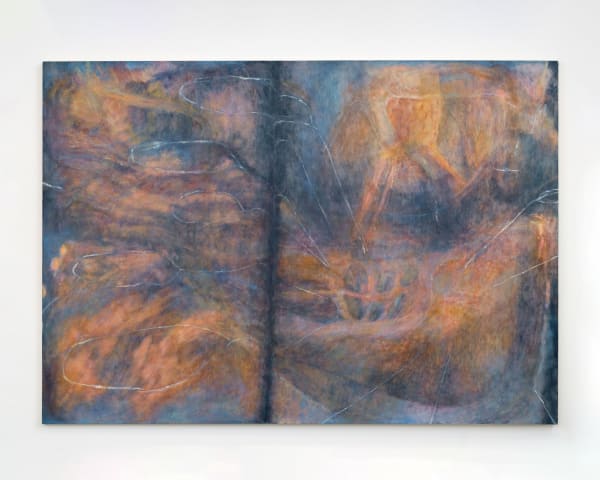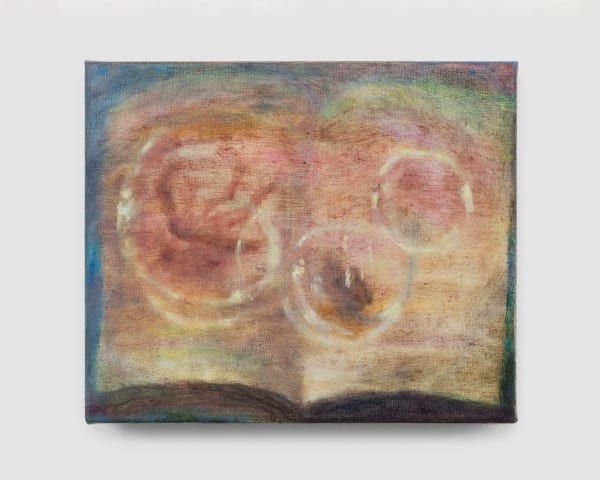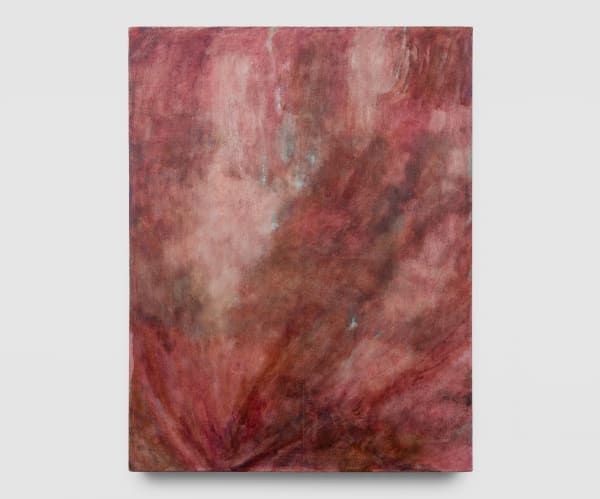Sophie Birch: Twofold Vision
Opening Reception
Saturday November 16
From 6 to 8 pm
Baert Gallery is pleased to present Twofold Vision, an exhibition of new oil paintings by London-based artist Sophie Birch, in her first solo show with the gallery. Built up in veils of abraded colour, Birch’s layered compositions make visible their construction. She uses an array of implements – brushes, cloths, palette knives, and sandpaper to apply paint and scrape or grind it away until what remains are unstill records of addition and removal, revelation and obscurity, delicacy and force. Overlaid translucencies and textures appear like membranes between interior and exterior realms; their interactions producing moments of optical anomaly and disturbance, invoking stumbling fugue states, through which constellations of images merge and overlap.
‘Twofold vision’ refers to William Blake’s idea of a mode of perceptive experience that combines differing ways of seeing and processing the world. Whereas single vision detects only what is tangible, measurable and logical, two-fold sight is inflected by emotion, imagination, context and association, folding together matter and spirit. Guided by this notion of double-looking, Birch creates works that explore the interplay between two (forces, fields, feelings, images), and the generative unravelling of visual experience that can occur in their midst.
Doubling happens repeatedly in the paintings: there are double page spreads, mirrored forms, references to binary systems in the body, and the incoherent effects of blurred vision. There is a doubling also in the way that a thing has been painted – a doubling of abstraction and affect. In Inner Ear, for example, an amorphous structure seems to float with an ethereal weightless quality, yet is being pinned in place by decisive notational marks.
A push and pull between softness and caging occurs throughout the works, expressing an attempt to explain or house something uncontainable. It is played out in the imagery of anatomical diagrams, stitching on denim, marks like chalk on board, but also on the mottled surfaces of the paintings themselves as they show the process of both trying to become something and trying to understand what that thing is. In works like Cradle and Amphibian, soft-spun structures and jelly encasements made by more-than-human life forms take on a similar organisational role to the speech bubbles and lassos, appearing like readymade drawings found in the world. Through this linkage of cross-species creation, Birch raises questions about our relation to and participation in the psychology of the biosphere.
Drawing from a variety of sources – natural forms, medical imaging, science textbooks, cinema – the paintings evolve in an intuitive process of unforming and reforming, as the artist responds to marks and shapes from her subjects. Works such as Confabulation invite multiple readings; while the title suggests an imaginative misremembering of an event. The painting, initially derived from an image of the auditory cortex, arrives at a new, almost botanical, form – reaching out to both an inner and outer experience.
Encounters with historical paintings also shape Birch’s works, with interpretations of their compositions layered into the networked imagery of her paintings. Newtonssleep! grows from an underlying Rorschach-like impression of Stanley Spencer’s Edenic Apple Gatherers (1912-13). Ingesting the synchronised sturdiness of the composition with her malleable marks, Birch softens the contours of the image, allowing it to metamorphise into a new poetics. Paint is applied in a way that tends to the surface as a whole. Massaged like balm into skin, it produces marks that speak of touch (more the patter of fingers than the reach of an arm) but also of elemental, chemical and bodily processes – bleaching, corrosion, bruising. A porosity and looseness to the paintings is maintained as the layers accumulate, allowing for an ungoverned movement between images. These overlap on the canvas, connecting and combining with other images and associations until the works reach a state that straddles dynamics or planes.
Entwined associations of sonography, ‘seeing stars’, painterly impressionism, and numinous light create a mediation between optical technology and optical bliss. The sterility and precision of scientific and medical attempts to look beneath the skin are folded into the evasive, sensorial dimension of colour and light, in an attempt to infuse their desire for knowledge with the “self-feel” of the experiencing body.
Starburst forms recur, like eruptions or rays of light or outstretching limbs, stayed in a moment of expansion, as though the paintings are trying to capture stages of growth or time. The simultaneous liveness of multiple states is produced via Birch’s process of layering up and scraping back, as the surfaces are continually returned to something from their past which then impresses upon what happens next. In this way, the paintings are an expression as much of the time in which they were made as their final resting place; each containing a similar slow speed, a fuzzy-static where both the before and after, the one way and the other, appear present at the same time.
— Bryony Bodimeade
-
 Sophie BirchConfabulation, 2024Oil on canvas
Sophie BirchConfabulation, 2024Oil on canvas -
 Sophie BirchSeams, 2023Oil on canvas
Sophie BirchSeams, 2023Oil on canvas -
 Sophie BirchCradle, 2024Oil on canvas
Sophie BirchCradle, 2024Oil on canvas
-
 Sophie BirchTwofold Vision, 2024Oil on canvas
Sophie BirchTwofold Vision, 2024Oil on canvas -
 Sophie BirchGloaming, 2024Oil on canvas
Sophie BirchGloaming, 2024Oil on canvas
-
 Sophie BirchSpinneret, 2024Oil on canvas
Sophie BirchSpinneret, 2024Oil on canvas -
 Sophie BirchInner Ear, 2024Oil on canvas
Sophie BirchInner Ear, 2024Oil on canvas -
 Sophie BirchAmphibian, 2024Oil on canvas
Sophie BirchAmphibian, 2024Oil on canvas -
 Sophie BirchNewtonssleep!, 2024Oil on canvas
Sophie BirchNewtonssleep!, 2024Oil on canvas -
 Sophie BirchArrow, 2024Oil on canvas
Sophie BirchArrow, 2024Oil on canvas -
 Sophie BirchOsmosis, 2024Oil on canvas
Sophie BirchOsmosis, 2024Oil on canvas



















